How to monitor bird nests
This page gives details of what you should record when visiting a bird nest, for details of submitting data please refer to online inputting guidance.
To collect the most useful information about a nesting attempt, it should be visited at regular intervals, ideally every 4-5 days, until no live eggs or young remain in the nest. If a nest is found at a later stage (with hatched young, for example), simply start monitoring from that point. The code of conduct must be followed at all times.

When to start
Birds can begin nesting in a box any time from February onwards, so it is important to start your monitoring as early as possible in the year. Birds may go in and out of the boxes very quickly, so even if you haven't seen any activity, it's always worth taking a careful look.
As our Blue Tit Diary indicates, most Blue Tits and Great Tits will begin nesting in late March or April, but different species will start nesting at different times. If you see birds flying in and out of the box, it's definitely worth having a look inside, particularly if they are carrying nesting material.
Counting contents
Accurate counts of nest contents provide the most useful information, but this isn’t always possible, in which case you can use approximate counts.
If you can see some eggs or young in the nest but think there is likely to be more, this can be recorded as ‘6+’ (if you could see 6 eggs, for example), if you cannot see the contents due to an adult sitting then ‘?’ can be used.
Status Codes
The progress of a nest can be recorded for each nest visit. For example, if you visited a nest and found a full clutch of warm eggs and a sitting parent that left the nest on your approach, you could record the fact that the eggs were warm (WA) and that a parent was sitting (AN).
If you visited the nest at a later date and found the remains of predated young, you could record the fact that the nest failed due to predation (JP). These statuses are available to select from a drop down menu when inputting records.
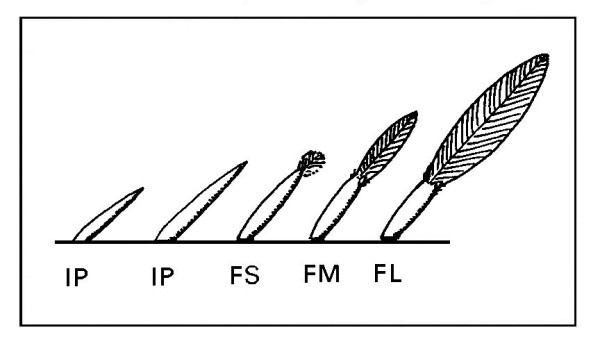
Recording the age of young birds
The age of the young birds in the nest os recorded by the length of their flight feathers. Use the diagram below to estimate how much of the feather has emerged from the feather sheath.
IP Primary feather in pin. Primary feathers (large flight feathers that form the outer half of the wing) are completely enclosed within the shiny sheath.
Primary feathers short; less than 1/3 emerged from the sheath.
FM Primary feathers medium; 1/3 to 2/3 emerged from the sheath.
FL Primary feathers long; more than 2/3 emerged from the sheath.
Nest Outcome
To find out how successfully birds are reproducing, we need to know the outcome of each nest that you monitor. If at least one young from a brood has fledged a nest, then we consider that nest to be a ‘success’.
Alternatively, if a nest fails to fledge even a single young bird, then we consider it to be a ‘failure’. You could conclude that a nest had failed if you found a brood of dead young lying in the cup (JD), or you could record a nest as a failure if you found it entirely pulled apart with no live young present just a few days after hatching (JP).
Alternatively, you might conclude that a nest was successful because you found it intact and empty just a few days after seeing the young almost ready to fledge (NE).
A record of an abandoned or destroyed nest is every bit as important as a record of a successful one as it helps us to work out what proportion of nests actually manage to fledge chicks.
If you begin monitoring a nest but then cannot continue making visits and so do not know the outcome of the nest, simply record it as outcome unknown (OU) on the last recorded visit you did make to the nest.
If you do visit an old nest and it has fresh eggs, this will be the start of a new record.
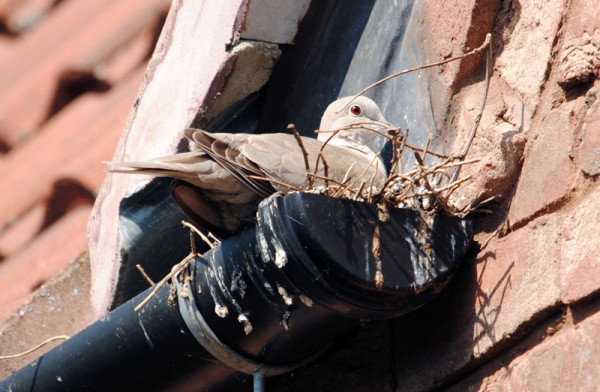
How often should I check a bird nest?
To get as much information as possible about each breeding attempt it is best to look in the nest/box on several occasions, though no more than is necessary (so as to disturb the birds as little as possible). A few well-planned visits to the nest or nest box can provide all the information we need.
Early in the season, check your box(es) once a week or so to see if anything is using them, and carry on checking at this frequency right through the breeding season, as the box may be used for a repeat nesting attempt by a pair which attempted a first brood elsewhere.
If you notice that birds have started nesting in your box, or you have an open nest in your garden shrub, start looking inside it once every 5-7 days. That way you will be able to find out how many eggs have been laid and how many chicks have been produced without causing too much disturbance.
Don't give up monitoring the nest/box when the birds have successfully left, or the nest has failed, because either the same pair or another pair of birds may try to nest again.
There is never any need to record the number of eggs or chicks in the nest more than once per day, even if you are monitoring with a camera.
Recording habitat
The type of habitat surrounding the nest may influence a variety of factors such as food availability, competition for nesting sites and predator abundance. These could all have an effect on breeding success. Collecting habitat data therefore allows us to investigate these relationships.
Nest site details such as nest height, orientation,whether the nest is hidden or exposed and the specific location of a nest, for example, in a bush or on a wall. Habitats and nest box details can be added in the ‘Habitat and box details’ area of Nesting Neighbours.
Example of completing a recordBelow is an illustration of a nest being followed from nest-building to fledging, with observations being entered into DemOn. For brevity, the example below only shows visits made every two weeks, not the recommended 4-5 days for passerine nests.
|
|
Visit 1When first inspected on 15 April, the nest looks complete but there are no eggs. The date and time of visit are entered on the top row of the visit details section (right) and the nest code N4is selected, as the nest is complete but unlined. |

|
|
|
Visit 2Returning on 28 April, an adult Blue Tit flies off the nest, revealing a clutch of eggs. The date and time are recorded on the next row and a count of the eggs is entered in the 'Live' eggs column. Had the eggs not been clearly visible, an approximate count could have been entered, e.g. ‘13+’. Adult activity code FN is given to show that a sitting female had been on the nest. |

|
|
|
Visit 3On 12 May, some of the eggs are hatched. A count of the chicks and the remaining live eggs are both put down (as there is no evidence that any eggs are dead). Status codes NA (chicks naked) and BL (chicks blind) are given to describe the appearance of the chicks. These codes help determine the likely hatching date. |

|
|
|
Visit 4On 25 May, 11 young are still in the nest. Code FM (feathers medium) is used to describe their appearance because the primary feathers of the largest chick are 1/3 emerged from their sheaths. There is also an egg present but it must be dead as eggs hatch within a few days of each other, so 1 is added to the 'Dead' eggs column. |
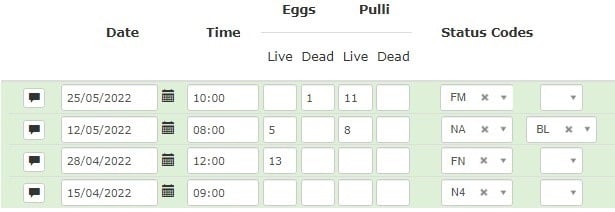
|
|
|
Visit 5By 8 June, the nest is empty, so an 'outcome' status code is used to indicate that the nesting attempt has finished. Here, the code NE is selected as the nest has every appearance of having fledged young successfully: complete and undisturbed and containing feather scales and droppings from large young. |
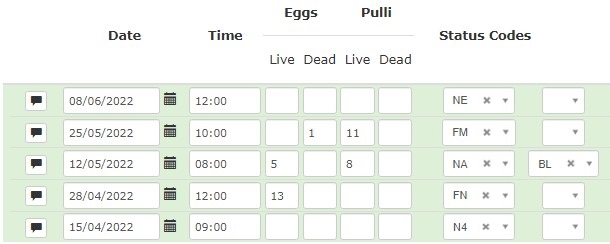
|
Recording an empty nest box
Once you have registered your nest box please ensure you send us your observations over the season, even if you saw no activity at all - we're interested in finding out which boxes have been occupied, so that we can understand why this should be. Start a new record and record the status code ‘SN - Nest box unused for the whole season’.

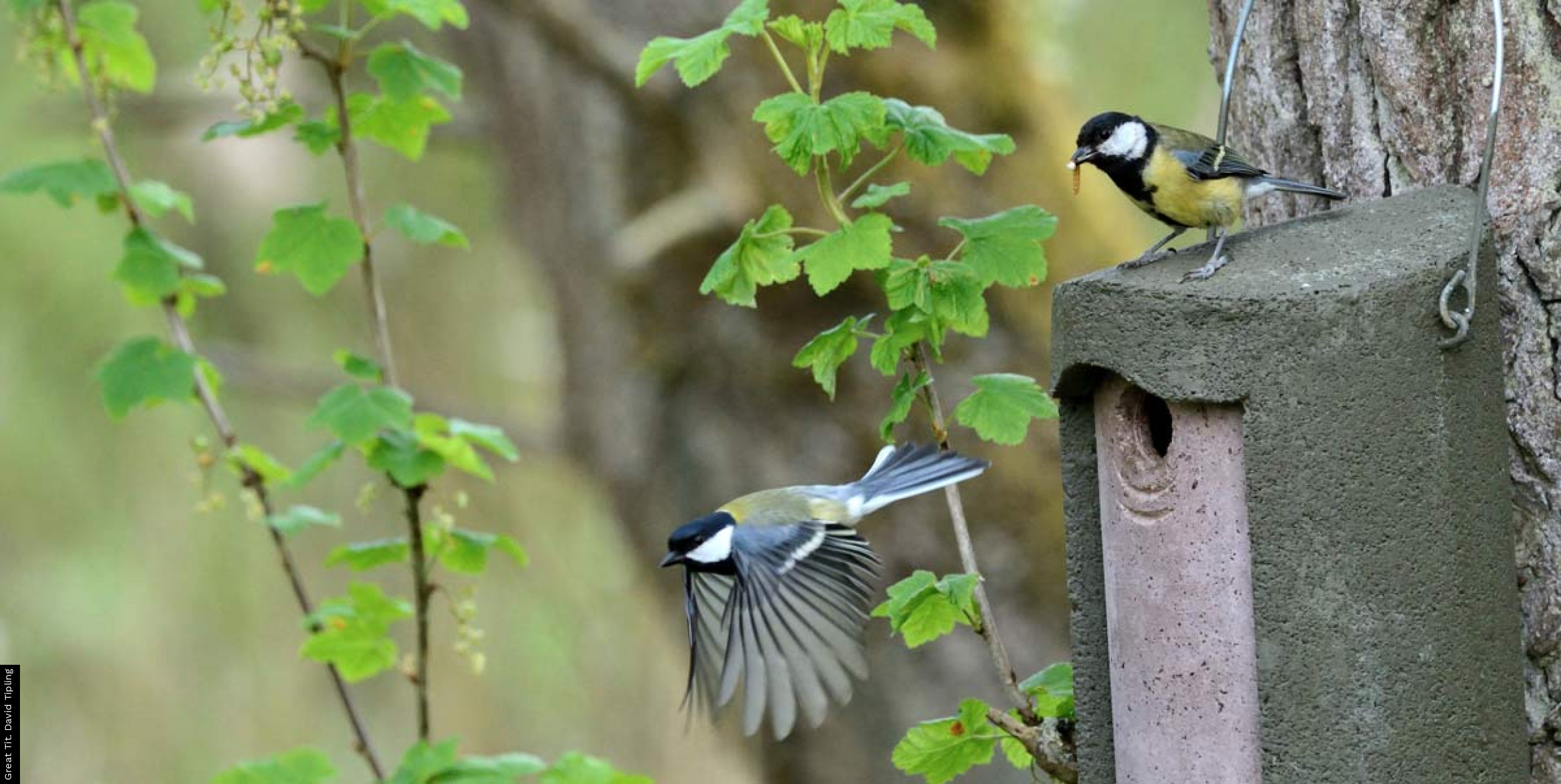
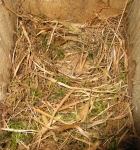
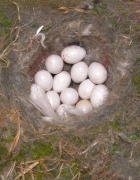
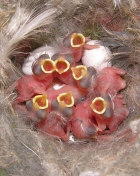
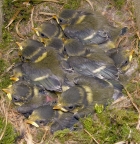
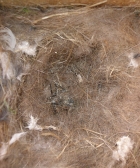




Share this page